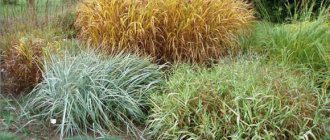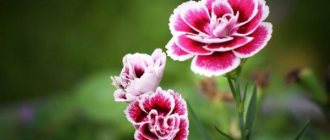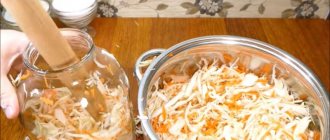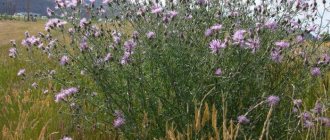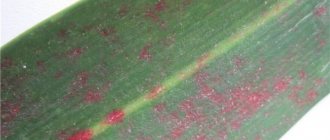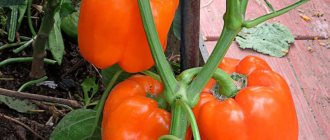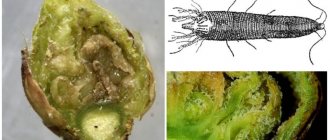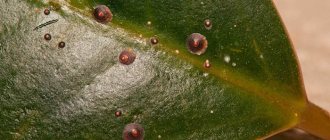What are nightshade vegetables?
Vegetables of the nightshade family (lat. Solanaceae) are the edible parts of flowering plants belonging to this family.
The Solanaceae family contains more than 2,000 plant varieties, but very few of them are actually eaten. Some, such as belladonna, are even poisonous.
However, nightshades also include vegetables that have been a staple food in many societies for hundreds of years.
Here are some of the most commonly eaten nightshade vegetables:
- eggplant
- pepper
- potato
- tobacco
- physalis vegetable
- tomatoes
A variety of herbs and spices are also derived from these vegetables, including cayenne pepper, crushed red pepper, chili powder and paprika.
Black and white peppers come from peppers that are not in the nightshade family.
Additionally, some condiments and other common food products contain nightshade vegetables as ingredients, such as hot sauce, ketchup, marinara sauce and salsa.
Although they are commonly called vegetables, many nightshades are botanically considered fruits, such as tomatoes, eggplants, and peppers.
Conclusion:
The nightshade family (Latin: Solanacaea) includes potatoes, tomatoes, eggplants and peppers.
Ornamental nightshade crops
These plants can compete with other ornamental flowers. The group of plants is presented as climbing plants, shrubs, and vines. They are used to decorate apartments, gardens, frame gazebos, and canopies.
Attention! Jasmine nightshade attracts attention thanks to its snow-white flowers in clusters; it is used for hanging gardening.
- False pepper nightshade is grown as a houseplant. In summer it is covered with small orange fruits in the form of glossy balls. When caring for a plant, you need to remember about soil moisture, this is an important condition for growth. The plant has several names, one of them is Coral Bush.
Important! The berries of the Tree of Love (this is another name) are poisonous; the flower pot should be kept out of the reach of children.
- fragrant tobacco is covered with white flowers that open only in the evening or on a cloudy day. In our regions, this plant is grown as an annual. The height of the bush is from 50 cm, the leaves are dark green, and the flowers can be white, yellow or red, depending on the variety. After flowering, a fruit containing seeds is formed. The collected seed is stored for up to 7 years, having high germination rate. Fragrant tobacco is a perennial bush, but due to frost intolerance, it is sown in Russia every year. There are many varieties of fragrant tobacco, the most popular are Aroma Green, Green Light, Night Fire, Mazhu Noir.
- Brugmansia is most often found in America, but it is also grown in Russia. The plant is easy to grow and takes root well in pots, greenhouses and open ground. The plant blooms with large, tubular-shaped flowers. Most often you can find white blooms, but there are also red, orange and lilac. The shape of the flowers may also differ; there are double and two-tier flowers. The aroma is rich, especially in the evening. After flowering ends, fruits appear in which the seeds ripen.
- Petunia grows on almost every plot, balcony, loggia. It blooms all summer, until the coldest weather. The colors of the flowers themselves are different; they can be one shade, two or three colors. Petunia can weave along fences, gazebos, and fences. She can climb down from hanging pots and flowerpots. During flowering, the leaves are practically invisible; the plant is completely covered with gramophone-shaped flowers. After the flower withers, a fruit with seeds appears.
Rich Sources of Nutrients
Many health professionals recommend eating nightshade vegetables due to their high nutrient density.
This means they contain many nutrients for fewer calories.
- Tomatoes . Tomatoes are a good source of vitamins A and C. They also contain an antioxidant called lycopene. These nutrients may reduce markers of inflammation and reduce the risk of developing several chronic diseases (,).
- Peppers . Peppers contain incredible amounts of vitamin C, which can provide many health benefits, including helping improve iron absorption ().
- Chilli . Chili peppers contain capsaicin, which gives them their heat. Taking a capsaicin supplement has been found to help relieve heartburn symptoms and may promote weight loss by helping to reduce calorie intake (,).
- Eggplants . Eggplants are a good source of fiber, with 2.5 grams of fiber per 80-gram serving. This essential nutrient helps regulate intestinal motility and may reduce the risk of developing cardiovascular disease ().
- Potato . Potatoes with skin contain sufficient amounts of potassium, vitamin B6 and manganese ().
However, unlike most nightshades, potatoes are a starchy vegetable. One small potato contains about 30 grams of carbohydrates ().
People with diabetes or others wanting to lower their blood sugar may want to avoid eating too many potatoes.
Conclusion:
Nightshades are a nutrient-dense food that may provide health benefits due to their vitamins, minerals, fiber and antioxidants.
Cultivated plants of the nightshade family
The family can be divided into wild and cultivated plants. Cultivated ones are obtained from wild ones using scientific methods: selection, genetic engineering, creation of hybrids. What applies to cultivated nightshades:
- potato;
- eggplant;
- tomatoes;
- Bell pepper;
- smoking tobacco.
They have long been grown by humans for food, animal feed, medicine, cosmetics, cigars and cigarettes.
Nightshades are plants that people encounter every day. Wild and cultivated members of the family are beneficial in medicines and food, and decorative species transform the home.
Are they harmful for people with autoimmune diseases?
Although nightshade vegetables are a rich source of nutrients, many people claim that they are harmful and should be avoided.
Most of these claims seem to center around a group of substances found in nightshades called alkaloids.
Alkaloids are nitrogen-containing substances commonly found in the leaves and stems of nightshades. They are often very bitter and act as a natural insect repellent.
But the edible parts of these plants also contain some alkaloids. Consequently, many people with autoimmune diseases exclude nightshades from their diet, believing that they make their health problems worse.
However, research has not yet shown that nightshade vegetables contribute to autoimmune diseases.
Inflammatory bowel disease
Inflammatory bowel disease (IBD) is a group of autoimmune diseases characterized by inflammation of the digestive tract. Examples are Crohn's disease and ulcerative colitis.
In people with IBD, the protective lining of the intestines does not function properly and allows bacteria and other harmful substances to enter the bloodstream (,).
This is sometimes called leaky gut or "leaky gut syndrome" ().
When this happens, the body's immune system attacks the harmful substances, leading to further intestinal inflammation and a variety of adverse gastrointestinal symptoms such as pain, diarrhea and malabsorption.
While research on this issue is limited, some animal studies suggest that alkaloids in nightshades may further aggravate the intestinal lining of people with IBD.
In two separate studies in mice with IBD, alkaloids in potatoes were found to negatively affect intestinal permeability and increase intestinal inflammation (,).
It is important to note that the alkaloids in these studies were in much higher concentrations than the amounts found in a typical serving.
Additionally, two test-tube studies suggest that fiber called pectin in tomatoes and capsaicin in peppers may also increase intestinal permeability (, ).
This limited animal and test-tube research suggests that people with IBD may benefit from eliminating or reducing their intake of nightshade vegetables. But before clearer recommendations can be made, human studies need to be conducted.
Effect on other autoimmune diseases
Even less is known about the effects of nightshades on other autoimmune diseases.
However, there may be some connection between leaky gut, or leaky gut syndrome, and autoimmune diseases such as celiac disease, autoimmune thyroiditis, multiple sclerosis, and rheumatoid arthritis (,).
Some experts believe that leaky gut syndrome may contribute to higher levels of inflammation throughout the body, which worsens symptoms of the disease (, ).
Based on this belief, some have suggested that nightshades may increase intestinal permeability and worsen the symptoms of these autoimmune diseases.
Many people with these conditions have eliminated nightshades from their diet and report a decrease in symptoms, but the evidence for this recommendation is currently largely anecdotal and requires study.
Conclusion:
Some animal studies suggest that people with IBD may have negative effects when consuming nightshades, but more research in humans is needed before recommendations can be made to avoid them.
LYUBODAR – a portal for self-knowledge and development
Nowadays, people eat a lot of different food products, although, of course, many of them are artificial, industrially created and it is impossible to call them complete food. Sooner or later, many people who have at least a drop of common sense come to this conclusion. But not everyone knows and thinks about the benefits of the vegetables they eat daily. People are accustomed to thinking that, apart from the presence of nitrates and pesticides in vegetables (a side effect of modern agriculture), vegetables are by default healthy, because they are food products created by nature itself for our food. Alas, this opinion is erroneous; not all plants growing in the wild are beneficial for humans, the same applies to vegetables that people are used to seeing almost every day on their table.
Tomato and cucumber salad has become a classic for us. However, just three hundred years ago these vegetables were not familiar to our ancestors. How much our diet has changed and whether it is so useful to have international food on the table can be seen in the example of nightshades.
What are nightshades?
Nightshades (tomatoes, potatoes, paprika, chili, bell peppers, eggplant and others) are the favorite vegetables of the Slavs, Europeans and Americans. What's harmful about them? Nightshades contain solanine. Solanine is an alkaloid that causes diarrhea, headaches and joint pain, lack of will, insomnia, nervousness, depression, dizziness, stomach cramps and cardiac arrhythmia. They may also cause gastrointestinal and neurological disorders. Solanine slows down the breakdown of acetylcholine and is a neurotransmitter.
The result is muscle stiffness. Solanine also contributes to thyroid dysfunction, chronic joint pain, leaky gut, and depression. The calcitriol in nightshades causes the intestines to absorb calcium from food, but in too large quantities it leads to increased calcium levels in the blood. The body stores excess calcium in soft tissues, tendons, cartilage, kidneys and skin. This can lead to osteoarthritis, coronary artery disease, bone spurs and pain!
Dr. Norman Childress (Ph.D., founder and chairman of the Arthritis and Nightshade Research Center) first became interested in nightshades in the 1950s. He was a horticultural scientist who discovered that diverticulitis was caused by nightshades.
Naturopath Garrett Smith says avoiding nightshades reduces arthritis pain, muscle pain, gallbladder problems and insomnia.
Norman Childers: Solanaceae are members of the Solanaceae family, which includes more than 90 genera and 2,000 species. Tobacco also belongs to this family. It has been used for centuries, but is now abandoned by many due to the harm it causes to health. Foods from the nightshade family include tomatoes, potatoes, eggplants and all types of peppers except black peppers, which belong to another plant family, Piperaceae. Mexican tomatoes are also nightshade tomatoes, popular in Central and South America. Why are nightshades literally called “night shadows” in English?
According to some sources, the Romans used nightshades to prepare poison for their enemies. When a person drank a poisoned drink, the shadow of a long, eternal night fell on him - he died.
The nightshade family is a large group of plants, consisting of 92 genera and more than 2000 species. These include such beautiful flowers as petunias, succulent vegetables, addictive tobacco, drugs such as scoplonin, found in insomnia pills, and many poisonous plants such as black-berry belladonna, which children are prohibited from eating, as well as sick smelling henbane.
What problems arise with nightshades?
Norman Childers: Because of several poisonous plants in this family, people were wary of eating potatoes in the past, and some older people still believe that tomatoes are poisonous. For more than a century, livestock farmers did not allow their livestock to eat the nightshades growing in the fields. Farmers sent their children to pull out nightshades. Shepherds are well aware of Jen Autry's famous song "Low Dope." Livestock owners watched animals eat these herbs, get sick and die. Tomatoes were once known as “cancer apples.” And tobacco for a long time caused obvious damage to the health of smokers, until the authorities, and now the media, began to fight it.
What do you offer people; What is your specialization?
Norman Childers: The question arises: Do the little-studied nightshades pose a health threat? Nowadays, potatoes and tomatoes are the main vegetables; Along with peppers and perhaps eggplants, they are part of many people's daily diets.
I became aware of the nightshade problem in the 1950s when my doctor told me that hot peppers could cause inflammation in my colon, which resulted in me having surgery. As a vegetable grower, I researched members of the nightshade family and eliminated these foods and tobacco from my diet.
My health problems, including arthritis, have disappeared. My colleagues noticed that I had cured my arthritis. They began to follow “my” diet, and, having received positive results, they finally turned to me: “Why don’t you help other sufferers?” Therefore, by collecting information personally and posting several advertisements with questions, we eventually received more than 400 positive reviews about the diet (72) and published a book called “Nightshades and Health.” Subsequently, the “Center for Studying the Effects of Nightshades on Health” was organized; We've distributed thousands of copies of Childer's Arthritis Diet (which has been revised from the original version) and are now publishing a Newsletter that reaches 4,300 subscribers.
What advice can you give to people who are trying to give up nightshades?
Norman Childers: It's not easy to do. A strong motivation is needed in the form of a desire to get rid of pain and disease, or one should simply strive to avoid these plants and possible health problems. If the average person eats nightshades from time to time, he can safely do so for many years. But nightshades, like herbal drugs such as tobacco, are addictive. The more of these drugs a person uses, the sooner problems arise, and the more serious these problems become. Some people are more sensitive to nightshades, especially people with arthritis and the elderly. But in our time of massive consumption of nightshades, fried potatoes and pizza, even children and teenagers, like adults, are forced to take medications for headaches, asthma, inflammation, etc. Parents are worried about their children.
The effects of nightshades are subtle, and heart problems, circulatory problems, or even cancer can occur suddenly. Tobacco is known to cause cancer, and tomatoes have had a similar reputation in the past, but unlike tobacco, it's hard to say whether other nightshades can cause cancer since everyone eats them. No comparative analysis possible. All nightshades contain narcotic and drug-like chemical components. All nightshades are addictive to a greater or lesser extent.
To summarize, I can say: we have found that a complete abstinence from all nightshades can completely or partially eliminate many serious diseases. This conclusion is based on our experience. Based on 45 years of experience healing tens of thousands of people, we suggest that nightshades and tobacco are the number one problem today. Researchers should pay closer attention to these plants, whose effects are clearly underestimated.
Think about it! For many millennia, Slavs and Europeans lived without nightshades (tomatoes, potatoes, eggplants, sweet peppers, etc.)! These plants were brought from America only about 400 years ago! What did our ancestors eat before? Were they really starving? Let's remember what our ancestors ate before the appearance of nightshades in Rus' and start eating these plants, including wild plants!
Obviously, it is beneficial for someone that our entire diet consists of nightshades, which cause addiction, are poisons in large doses, affect the mental state, reduce the level of awareness and pollute people’s bodies, making them sick and dependent on medicine!
Let's return to traditional Slavic foods and plants that grow in our area and are much more beneficial in every sense for our physical, psychological and spiritual health!
Also read the article “CAUTION: POTATOES! HOW AND WHY WERE POTATOES INTRODUCED IN RUSSIA”: +++ Useful article? Tell your friends and sign up to receive key new articles. Thank you! Subscription form in the upper right corner of the page. +++ Other useful articles and materials:
WILD PLANTS AND GIFTS OF NATURE - FREE FOOD! Selection of materials: https://vk.com/wall-49560567_1395
FREE FOOD IS A NATURAL HUMAN RIGHT: https://vk.com/wall-49560567_1365
AMARANTH IS A MIRACLE PLANT FOR OUR HEALTH AND A SOLUTION TO THE FOOD PROBLEM! https://vk.com/wall-49560567_1057
About taiga, forest milk and swamp bread: https://vk.com/wall-49560567_1393
GREEN COCKTAILS ARE A SOURCE OF VITAMINS, MICROELEMENTS AND MINERALS FOR THE BODY, A WAY TO LOSE WEIGHT AND IMPROVE HEALTH. About the benefits of green smoothies and how to prepare them: https://vk.com/wall-49560567_593
SENSATIONAL RESEARCH OF ACADEMICIAN A.M. UGOLEV. THEORY OF ADEQUATE HUMAN NUTRITION: https://vk.com/wall-49560567_1375
IT IS IMPORTANT TO KNOW TO BE HEALTHY AND TO BE CURED FROM “INCUREABLE” DISEASES! WHAT IS SPECIES NUTRITION? https://vk.com/wall-49560567_736
ARE HUMANS REALLY DESIGNED TO CONSUME MEAT? https://vk.com/wall-49560567_878
RELATIONSHIP OF HUMAN HEALTH AND NUTRITION. CONCEPTUAL MATERIALS ABOUT NUTRITION AND FUNCTIONING OF THE HUMAN BODY, WHICH EVERYONE SHOULD KNOW TO BE HEALTHY: https://vk.com/wall-49560567_1310
NUTRITION, DISEASES AND DOCTORS' ILLITERACY: https://vk.com/wall-49560567_1368
ERADICATION OF LEADING CAUSES OF DEATH. World-renowned medical doctor Michael Greger talks and shows the results of the largest long-term studies in the field of nutrition, proving a very definite connection between fatal diseases and the consumption of “food” of animal origin. It has been shown in many experiments what stunning results the transition to an exclusively plant-based diet gives: https://vk.com/wall-49560567_309
FILM “THE SCIENCE OF FASTING”. FASTING IS A SIMPLE, NATURAL AND UNIVERSAL WAY FOR TREATING MOST CHRONIC AND “INCUREABLE” DISEASES! https://vk.com/wall-49560567_1374
CANCER AND OTHER “INCUREABLE” DISEASES CAN BE CURED WITHOUT DRUGS! Share these materials, it could save someone's life! https://vk.com/wall-49560567_1227
Attention! Let's cure diabetes! https://vk.com/wall-49560567_322
EXPLANATION ABOUT TRADITIONAL MEDICINE AND HOME BIRTH FROM THE CREATORS OF THE PUBLIC “STEPS TO A HARMONIOUS LIFE”: https://vk.com/wall-49560567_1140
WHY DO PEOPLE GET SICK AND WHAT ARE BACTERIA? https://vk.com/wall-49560567_770
IS IT WORTH TREATING CHILDREN AND YOURSELF WITH MEDICATIONS? https://vk.com/wall-49560567_737
CAUTION: FOOD LEUKOCYTOSIS: https://vk.com/wall-49560567_804
VERY IMPORTANT! THE WHOLE TRUTH ABOUT MEDICINE! COMPLETE EXPOSURE OF THE MEDICAL INDUSTRY. THEATER OF MEDICAL ABSURDNESS THROUGH THE LOOKING GLASS OF THE SYSTEM! Everyone! And especially for those who suffer from chronic or “incurable” diseases or who have such people in their family, as well as those who have healthy children! https://vk.com/wall-49560567_778
A UNIQUE NATURAL HEALTH REMEDY – POMEGRANATE! Treats: dysentery, salmonellosis, cholera, typhoid fever, stomach and intestinal ulcers, colitis, dysbacteriosis, etc.: https://vk.com/wall-49560567_1223
YEAST IS A DANGEROUS BIOLOGICAL WEAPON. How to protect yourself from it and stay healthy: https://vk.com/wall-49560567_594
PRINCIPLES OF IDEAL NUTRITION: https://vk.com/wall-49560567_704
Paul Bragg: Healthy Eating - Natural Eating! https://vk.com/wall-49560567_648
PRODUCT COMPATIBILITY: https://vk.com/wall-49560567_834
Share on social media networks
To My World
0
Tweet
RќСЂР°РІРёС‚СЃСЏ
Sensitivity and allergies
Other groups of people without autoimmune diseases say that eliminating nightshades from their diets has significantly improved their health.
These people are often said to have a sensitivity to nightshades.
One of these groups includes people with arthritis, as some claim that eliminating nightshades provides pain relief.
There is an older theory that nightshades contain a form of vitamin D that causes calcium deposits that can contribute to joint pain and other symptoms of arthritis.
It is true that a vitamin D-like substance has been found in plants of the nightshade family. And some studies have shown that animals that eat these plants develop calcium deposits in their soft tissues, which cause health problems (, ,).
However, there appears to be no evidence that nightshades contain vitamin D or that eating these vegetables causes calcium deposits, arthritis symptoms, or other related health problems in humans.
In addition to sensitivity, some people are allergic to certain vegetables in the nightshade family in rare cases.
Allergy symptoms vary but may include skin rash, hives, itchy throat, swelling and difficulty breathing (,).
If you experience any of these symptoms when you eat a particular nightshade vegetable, it would be wise to stop eating that food and seek medical attention for further testing.
If you want to start an elimination diet, consult your doctor or nutritionist.
Conclusion:
People who claim to be sensitive to nightshades have found symptom relief by avoiding them, although there is no research to support this. Others have rare allergies to nightshades.
Characteristics of the nightshade family
Solanaceae is a family of plants that, as of 2021, has 115 genera and more than 2,700 species. People encounter many of them every day: indoor flowers, common vegetables, tobacco and medicinal plants.
Representatives of the nightshade family
Representatives are divided into three life forms:
- herbs;
- shrubs (erect and creeping);
- trees (nightshade or acnistus).
Together with the Convolvulaceae family, they form the general order of Solanaceae.
Features of nightshade plants
Mostly representatives have a subtle pleasant aroma. Poisonous species are partially covered with glandular cells and emit a pungent odor.
Important! Most nightshades contain solanine. This toxic substance, classified as an alkaloid, does not cause harm in small concentrations. The maximum amount is found in unripe fruits with green skin (tomatoes, eggplants, peppers, etc.). Therefore, green fruits and tops cannot be used for livestock feed. During heat treatment, solanine is destroyed.
A dangerous dose of alkaloids is found in henbane, dope and belladonna. Poisoning causes fever, headache, dizziness, and diarrhea. With a prolonged reaction, the function of the thyroid gland is disrupted, the tissues of the digestive organs are damaged, and vision deteriorates.
Actions in case of poisoning: call an ambulance, then drink water with some absorbent and induce vomiting.
Eliminating nightshades from the diet
If you are healthy and have no adverse reactions to nightshades, there is no good reason to avoid them.
They are rich in nutrients and have several potential health benefits.
On the other hand, if you have an autoimmune disease such as IBD or think you may be sensitive to nightshades, you may want to consider eliminating them from your diet to evaluate changes in symptoms.
If you decide to do this, completely eliminate all nightshade vegetables and nightshade-containing foods for at least 4 weeks. Be sure to monitor the severity of your symptoms during this time.
After this period, you should begin introducing nightshade vegetables back into your diet one at a time. During this time, do not make any lifestyle changes.
After reintroducing nightshades, compare the severity of your symptoms during the elimination and reintroduction periods.
If symptoms were less severe when you removed them from your diet and worsened when reintroducing them, you can continue to avoid them for a long period of time.
If symptoms were no different between the two periods, you should look for other ways to relieve your symptoms and continue to eat nightshades.
Conclusion:
Most people are encouraged to eat nightshade vegetables. However, if you have an autoimmune disease to evaluate for any changes in symptoms, you may want to consider eliminating nightshades from your diet.
Medicinal plants
Attention! All medicinal plants of this family are poisonous! It is not recommended to prepare drugs for internal consumption on your own!
Wolfberry or nightshade is bittersweet. A plant growing in the wild nature of our country. To prepare tinctures and decoctions, plant materials (young shoots and leaves) are collected during the flowering period. Medicines are used for skin diseases, rheumatism, and wound healing. The medicine is taken internally for bronchitis, inflammation, as an anthelmintic.
Wolfberry
Henbane black . In folk medicine, the leaves and oil from the seeds of the plant are used. Externally, henbane is used to treat rheumatism, gout, and bruises. The plant is included in anti-sickness tablets.
Henbane black
Tobacco . A guest from the American continent has subjugated almost the entire world. The poison nicotine, found in the foliage of the plant, causes a person to become highly addictive to smoking tobacco. The leaves of this plant also have beneficial properties - skin diseases are treated with tobacco infusions. Gardeners know that the pungent smell of tobacco infusion repels many harmful insects. Tobacco crumbs repel moths with their smell.
Tobacco
Datura vulgaris can also be classified as an ornamental plant. Its large white “gramophone” flowers look very impressive. The plant grows well in the middle zone, planted with seedlings in open ground after frost has left. Prefers loose, well-amended soil. Datura plant material is present in medicines against asthma and whooping cough.
Datura common
How to replace nightshade vegetables
If you decide to eliminate nightshades from your diet long-term, you will miss out on the nutrients they contain.
However, there are many other foods to choose from that contain many of the same nutrients and offer similar health benefits.
Here are a few foods you can substitute for nightshade vegetables:
- Yam (sweet potato) . Switching from white potatoes to sweet potatoes will help you avoid nightshades and start getting much more vitamin A.
- Pesto . Instead of tomato sauce on pizza and pasta, use green pesto. It's a tasty alternative that doesn't have to contain nightshades. Red pesto typically contains tomatoes and should be avoided if you are trying to eliminate nightshades.
- Citrus fruit . Many nightshade vegetables contain vitamin C, but citrus fruits such as oranges, tangerines and grapefruits are also excellent sources.
- Green leafy vegetables . Green leafy vegetables such as spinach, kale and collard greens are an excellent source of many vitamins, minerals and dietary fiber.
If you still want to eat nightshades but would like to reduce their alkaloid content, you can do this by peeling potatoes, limiting your consumption of green tomatoes, and eating these vegetables fully cooked.
Conclusion:
Eliminating nightshades from your diet also eliminates some important nutrients. However, there are many other nutrient-dense foods you can try.
Signs of the nightshade family
Bromeliad family - tillandsia, pineapple, bromeliad and others
The family belongs to the class of dicotyledons. This means that plant seed embryos have two lateral cotyledons. Monocots, as the name suggests, have one lobe. Representatives of monocots are quite similar in their characteristics. Solanaceae are very different from each other, but a number of common characteristics can be identified.
Characteristics of nightshades listed in scientific presentations:
- leaf shape: smooth, serrated, notched or lobed;
- at the bottom and in the middle of the stem the leaves are arranged singly, in the flowering part - in pairs;
- inflorescences are medium-sized curls, often with a scattering of flowers;
- the calyx most often has 5 leaves, less often - from 4 to 7;
- The whisk can be in the form of a wheel, saucer, or funnel.
General signs
Nightshade fruit
They bear fruit in berries (pepper, nightshade, eggplant, potato, physalis, etc.) or capsules (tobacco, petunia, belladonna, henbane, datura). The boxes are opened one by one. The seeds are kidney-shaped and contain a large amount of protein.
Inflorescence of nightshade plants
Types of inflorescence – curl or gyrus. Flower formula: *H(5)L(5)T5P1. Meaning:
- the calyx consists of five fused sepals;
- the corolla consists of five fused petals;
- the number of stamens attached to the petals is five;
- pestle - one.
Flower structure
Leaves of the nightshade family
Simple, lobed, sometimes dissected. They are arranged alternately on the stem. Stipules are absent. Some representatives are covered with hairs. List of nightshade crops: Herbaceous plants
The nightshade family, with more than 2,600 species, consists primarily of herbaceous plants.
- mandrake;
- tobacco;
- eggplant (nightshade);
- potato;
- bitter and sweet peppers;
- bittersweet nightshade (wolfberry);
- scopoly;
- false pepper nightshade;
- hanging calibres;
- nightshade jasmine, etc.
Vegetable plants
Vegetable nightshade plants:
- Potato. The tubers of the plant, which are modified underground shoots, are eaten. In vegetable gardens, potatoes are traditionally propagated using tubers, but it is possible to grow them using seeds. The potato fruit is an inedible greenish berry with seeds inside.
- Eggplant. Wild ones are perennial, and cultivated ones are perennial. From a botanical point of view, the blue fruit is a berry. Most often, unripe fruits with a lilac-violet color are used for food. After full ripening, the eggplant peel acquires a brown-green color, and the fruit itself becomes tough and tasteless.
- Capsicum peppers (sweet and bitter). The alkaloid capsacin gives the vegetable its pungent taste.
- Tomatoes (tomatoes). As in the previous case, the fruits are berries, not vegetables.
Interesting! In 1893, the US Supreme Court, while resolving a customs dispute, recognized tomatoes as vegetables, since they are not eaten for dessert.
Other edible nightshades that are not vegetables:
- Melon pear. In Russia it is found in gardens, but is not grown on an industrial scale. The fruits have a sweet taste and contain a large amount of vitamins, micro- and macroelements.
- Physalis. Botanically similar to tomatoes. In the CIS, physalis is most often found in confectionery products - it is used as decoration. You can also make jam or pickles from the fruits that are hidden in the cups.
Physalis

